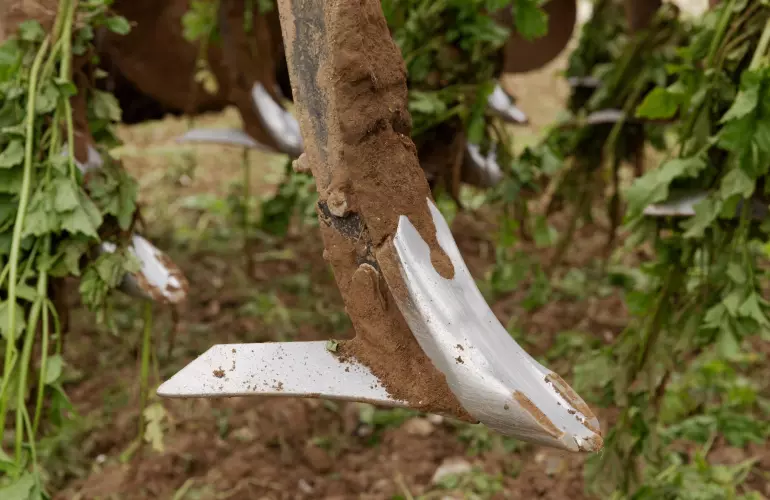
Farming 80ha near Andover in Hampshire, just to the south of the North Wessex Downs, he faces the challenge working with clay-capped soils with flints. Under a conventional cultivation regime, the cost of wearing metal and excessive diesel use had become unsustainable, so he turned to a non-inversion minimum tillage system.
Initially building his own three metre machine, he then progressed to a four metre system where a single pass with a trailed shallow tine and disc cultivator precedes a min till drill. A decade or so on from his initial tentative steps, Chris is not only operating with substantially lower operating costs but is seeing a continual improvement in soil health.
“We’ve now reduced the cost of wearing metal down to around £5/ha and our diesel use for cultivations is in the region of £5 - £7/ha,” he says. “These cost reductions are vital, but its been just as beneficial to see the improvement in the overall workability of the land.”
One of his biggest hurdles when converting to min till was finding the right cultivator for his system. This wasn’t due to any shortage of choice, but more to do with a lack of responsiveness from most machinery suppliers.

“It was difficult finding anyone willing to demonstrate a machine without some kind of guarantee of purchase or payment for delivery,” recalls Chris. “In the end, I saw the Kuhn Cultimer working at a tillage event and it seemed to offer most of what I was looking for. Within a week of seeing the machine in action Kuhn had arranged a demonstration on the farm and we then had a machine supplied by T.H Whites of Marlborough.
“I’m not aiming to move a lot of soil, so wanted a machine that would create a good tilth within the top four inches. I also wanted a trailed machine, to minimise the amount of weight on the tractor. The Cultimer is relatively light, being as much as two tonnes less than equivalent four metre machines, and yet it is still very strong and well built.
“Run behind a 170hp tractor, we’re able to operate with low tyre pressures of around 12psi, which - along with flotation tyres on other machinery - means we’re reducing the risks of compaction.
“Most important of all is the quality of the seedbed that’s created. When one of my neighbours saw the job the Cultimer was doing he immediately ordered his own six metre machine, it was that good.”
The Cultimer has three rows of staggered tines, a row of levelling discs and a rear roller. It’s a versatile machine, offering a range of cultivation depths down to 35cm, but Chris opted for a specification with front depth control wheels and with wings on the tines, so the machine works within the top 10cm of the soil. With his flinty soils front of mind, he also specified tungsten tipped points on the tines and has certainly seen the benefits, as he has from the double spring loaded non-stop mechanical break-back system.

“It’s certainly been worthwhile investing the extra in tungsten tipped points because after close to 1,000ha of work we’re still on the original set,” says Chris. “The spring back safety system really protects the machine and is a particular advantage in our conditions. The system operates with 600kg of pressure at the points, so ground penetration is very good, but when there is an obstruction the leg retracts a good distance and springs back into work immediately. I can cultivate up to 30ha in a day and that’s certainly helped by the efficiency of the spring back system.”
The typical rotation at Foxcotte Farm is a first wheat (yielding close to 10 tonnes/ha) followed by spring barley, grown for malting, with either winter or spring beans as a break crop. These are now all established with a minimum tillage drill, usually after one pass with the Cultimer, but a second pass is used where a cover crop has been grown.
Cover crops, along with the practice of incorporating all the straw, are another important factor in improving the soils.
“We’ve not baled any straw for ten years,” adds Chris, “and we’ve started growing mustard as a cover crop more recently, avoiding where possible any bare soil over winter. The mustard is soft stemmed, and we only allow it to grow to about one foot high, so the Cultimer copes with this perfectly well and allows the drill to follow without any problems.
“It’s all part of building fertility and improving the workability of the soil, and that’s helping to keep the cost of establishment down.”
